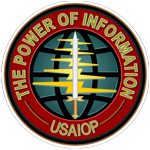- CAC Home
-
About CAC
-
CAC Senior Leaders
Commanding GeneralCombined Arms CenterLTG Milford H. Beagle Jr.Deputy to the
Commanding GeneralCombined Arms CenterMr. Gregg Thompson
Command Sergeant MajorCombined Arms CenterCSM Stephen Helton
Chief of StaffCombined Arms CenterCOL Brandon SmithCommand Chief Warrant OfficerCombined Arms CenterCW5 Carlos Terrones
Deputy
Commanding GeneralCAC ARNGBG Charles MorrisonDeputy
Commanding GeneralCAC USARVACANTDeputy Commanding General - EducationArmy UniversityBG David FoleyDeputy Commanding GeneralCAC - TrainingBG Jeremy WilsonDirectorMission Command Center
of ExcellenceCOL Bryan Babich
-
CAC Senior Leaders
-
Organizations
-
CAC HQ
-
CAC Subordinate Organizations
- The Army University (Army U)
- Combined Arms Center - Training (CAC-T)
-
Mission Command Center of Excellence (MCCoE)
- Leadership
- Mission Command Resources
- SharePoint
- Army Joint Support Team (AJST)
- Air Land Sea Space Application Center (ALSSA)
- Combined Arms Doctrine Directorate (CADD)
- Center for Army Leadership (CAL)
- Directorate of Training (DOT)
-
Force Modernization Proponent Center (FMPC)
- Command and Control Integration (C2I)
- Security Force Assistance Proponent (SFAP)
- Contact Us
- Peacekeeping & Stability Operations Institute (PKSOI)
-
Key Partner and Supporting Units
- » Fort Leavenworth Garrison
- » Presidio of Monterey Garrison
- » 902d Military Intelligence Group
- » Munson Army Health Center (MAHC)
- » Joint Center for International Security Force Assistance (JCISFA)
- » U.S. Disciplinary Barracks
- » Community Health Promotion Council (CHPC)
- » Red Team Education
- Contact Us
- Training & Doctrine Command (TRADOC)
- Mission Command Capability Development and Integration Directorate
- 15th MP Brigade
- Centers of Excellence
- Branch Schools
-
Non-Branch Schools
-
Command and General Staff College (CGSC)
- Leaders
- Mission & Vision
- Students
-
Command and General Staff School (CGSS)
- Inbound Class Information
- Department of Distance Education (DDE)
- Department of Command and Leadership (DCL)
- Department of Sustainment and Force Management (DSFM) (Previously DLRO)
- Satellite Campus Program
- Air Force Element (AFELM)
- Navy Element (NAVELM)
- Marine Corps Element (MCELM)
- International Military Student Division (IMSD)
- Contact Us
- School of Advanced Military Studies (SAMS)
- School for Command Preparation (SCP)
- Sergeants Major Academy (SGM-A)
- CGSC Degree Programs
- Registrar
- CGSC News Archive
- Contact CGSC
-
Warrant Officer Career College (WOCC)
- About USAWOCC
- Warrant Officer Program
- Warrant Officer Blackboard Enrollment
- Warrant Officer Courses
- Benefits, Pay, and financial Matters
- Fort Rucker Information
- News/Media
- Retirement/Transition Links
- Warrant Officer Career College Contact Information
- Center for the Army Profession and Leadership (CAPL)
- Western Hemisphere Institute for Security Cooperation (WHINSEC)
- SHARP Academy
- U.S. Army Sergeants Major Academy (USASMA)
- The U.S. Army Inspector General School (TIGS)
-
Command and General Staff College (CGSC)
-
CAC HQ
- References
- Products & Resources
IO Opportunities
CDID Home

The Information Operations (IO) Officer (FA 30) provides the Army with a core of professionally developed information environment (IE) specialists to support the nation’s operational environment dominance strategy. The IO officer understands the complexity of the IE, assess and evaluates the Army’s best use of the IE, and synchronizes information related capabilities (IRCs) for commanders to shape and protect the Army’s use of the information environment. The IO officer synchronizes IRCs to affect information warfare, information protection, communications alignment and engagement. The IO officer brings specialized training and development in OPSEC and MILDEC. The IO officer is found at Brigade and higher level commands and in specialized IO units.
Opportunities
Advanced Civil Schooling (ACS)
IO Officers are eligible to pursue an IO related master’s degree in a number of universities to include the Naval Postgraduate School, Harvard, Johns Hopkins and Princeton. Selection is based on job performance, qualification course performance, and GRE. Graduates incur an active duty service obligation (ADSO) upon completion.
Command
There are two command opportunities for FA 30 officers: Commander, 1st Battalion, 1st Information Operations Command at the rank of lieutenant colonel, and Commander, 1st Information Operations Command at the rank of colonel. This is not a DA selected command position. Eligible officers will be notified by email of packet instructions.
Nominative Assignments
IO officers have opportunities to serve in nominative assignments including: OSD, Army Staff, joint assignments, SMUs and NATO.
Joint Assignments
IO officers have opportunities to serve in Joint duty assignment billets in the grade of MAJ and above. These positions are located at Army Service Component Headquarters, interagency organizations, joint or multi-national commands or activities involved in the education, planning, employment, or support of joint and multinational forces.
Interested in becoming an IO Officer
Captains and Majors interested in becoming an FA 30 should review the latest Voluntary Transfer Incentive Program (VTIP) MILPER message to determine eligibility. VTIP allows active duty officers to transfer into a branch or functional area within the Army's manning requirements. Multiple panels are held each year and approval depends on strength and overall personnel requirements. Click here for additional information

